Introduction
In order to improve the ecological environment and increase the forest coverage in northwest, north and northeast China, the Chinese government launched the Three-North Shelterbelt Program (TNSP), which covers 13 provinces (autonomous regions or municipalities) across northern China with a total area of 4.069 million km2. A 72-year development plan has been formulated for the TNSP, in which the Program was divided into three stages, aiming at increasing the forest cover from 5.05% to 14.95% in the area. This effort has been organically incorporated with and contributed to China’s overall strive for the achievement of the related SDGs.
Objective of the practice
The project has greatly increased the forest coverage and effectively combated desertification in the program area, improved the overall situation of serious wind-sand hazards and soil erosion, enhanced the resilience and adaptability to natural disasters and climate change, which have contributed to the realization of the Global Forest Goal (GFG) 1 of the United Nations Strategic Plan for Forests 2017-2030 (UNSPF) and Sustainable Development Goal (SDG) 13 and 15 of the 2030 Agenda for Sustainable Development. The TNSP has also greatly improved the ecological environment in the region, increased grain output and made great achievements in the construction of forest product bases. Thanks to the development of forest and fruit related industries, tens of millions of local people have been pulled out of poverty. These achievements demonstrate that the TNSP is a good example for achieving GFG 2, and SDG 1, 2, and 8. Additionally, it is also a good practice in achieving GFG 4 and SDG 15 and 17 as it mobilizes funds and strengthens public-private partnerships at all levels through various channels.
In the coming decades, the Chinese government will continue with the TNSP program with the goal of increasing the forest area in the region to 33.558 million ha, forest coverage to 14%, forest stock volume to 260 million cubic meters, and complete by and large the development of the ecological security shelterbelt in north China by 2020.
Key stakeholders and partnerships
The project has improved the living conditions of local residents and promoted the restoration of the eco-system and environment of adjacent metropolitan areas. Impoverished rural residents are able to raise income and get out of poverty through forestry and fruit growing. Public and private sectors, as well as international communities have worked together in effort of afforestation and jointly fought combat against desertification.
Implementation of the Project/Activity
Results/Outputs/Impacts
Enabling factors and constraints
Sustainability and replicability
Conclusions
Other sources of information
Goal 2
2.3 - By 2030, double the agricultural productivity and incomes of small-scale food producers, in particular women, indigenous peoples, family farmers, pastoralists and fishers, including through secure and equal access to land, other productive resources and inputs, knowledge, financial services, markets and opportunities for value addition and non-farm employment
Goal 8
8.2 - Achieve higher levels of economic productivity through diversification, technological upgrading and innovation, including through a focus on high-value added and labour-intensive sectors
8.3 - Promote development-oriented policies that support productive activities, decent job creation, entrepreneurship, creativity and innovation, and encourage the formalization and growth of micro-, small- and medium-sized enterprises, including through access to financial services
Goal 13
13.1 - Strengthen resilience and adaptive capacity to climate-related hazards and natural disasters in all countries
13.2 - Integrate climate change measures into national policies, strategies and planning
13.3 - Improve education, awareness-raising and human and institutional capacity on climate change mitigation, adaptation, impact reduction and early warning
Goal 15
15.1 - By 2020, ensure the conservation, restoration and sustainable use of terrestrial and inland freshwater ecosystems and their services, in particular forests, wetlands, mountains and drylands, in line with obligations under international agreements
15.2 - By 2020, promote the implementation of sustainable management of all types of forests, halt deforestation, restore degraded forests and substantially increase afforestation and reforestation globally
15.3 - By 2030, combat desertification, restore degraded land and soil, including land affected by desertification, drought and floods, and strive to achieve a land degradation-neutral world
15.4 - By 2030, ensure the conservation of mountain ecosystems, including their biodiversity, in order to enhance their capacity to provide benefits that are essential for sustainable development
15.9 - By 2020, integrate ecosystem and biodiversity values into national and local planning, development processes, poverty reduction strategies and accounts
15.a - Mobilize and significantly increase financial resources from all sources to conserve and sustainably use biodiversity and ecosystems
15.b - Mobilize significant resources from all sources and at all levels to finance sustainable forest management and provide adequate incentives to developing countries to advance such management, including for conservation and reforestation
Goal 17
17.9 - Enhance international support for implementing effective and targeted capacity-building in developing countries to support national plans to implement all the sustainable development goals, including through North-South, South-South and triangular cooperation
17.16 - Enhance the global partnership for sustainable development, complemented by multi-stakeholder partnerships that mobilize and share knowledge, expertise, technology and financial resources, to support the achievement of the sustainable development goals in all countries, in particular developing countries
17.17 - Encourage and promote effective public, public-private and civil society partnerships, building on the experience and resourcing strategies of partnerships
Data, monitoring and accountability
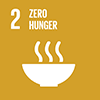
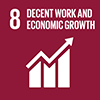
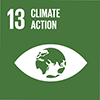
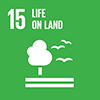
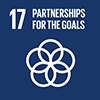
 Start: 01 January, 1978
Start: 01 January, 1978 Completion: 31 December, 2050
Completion: 31 December, 2050